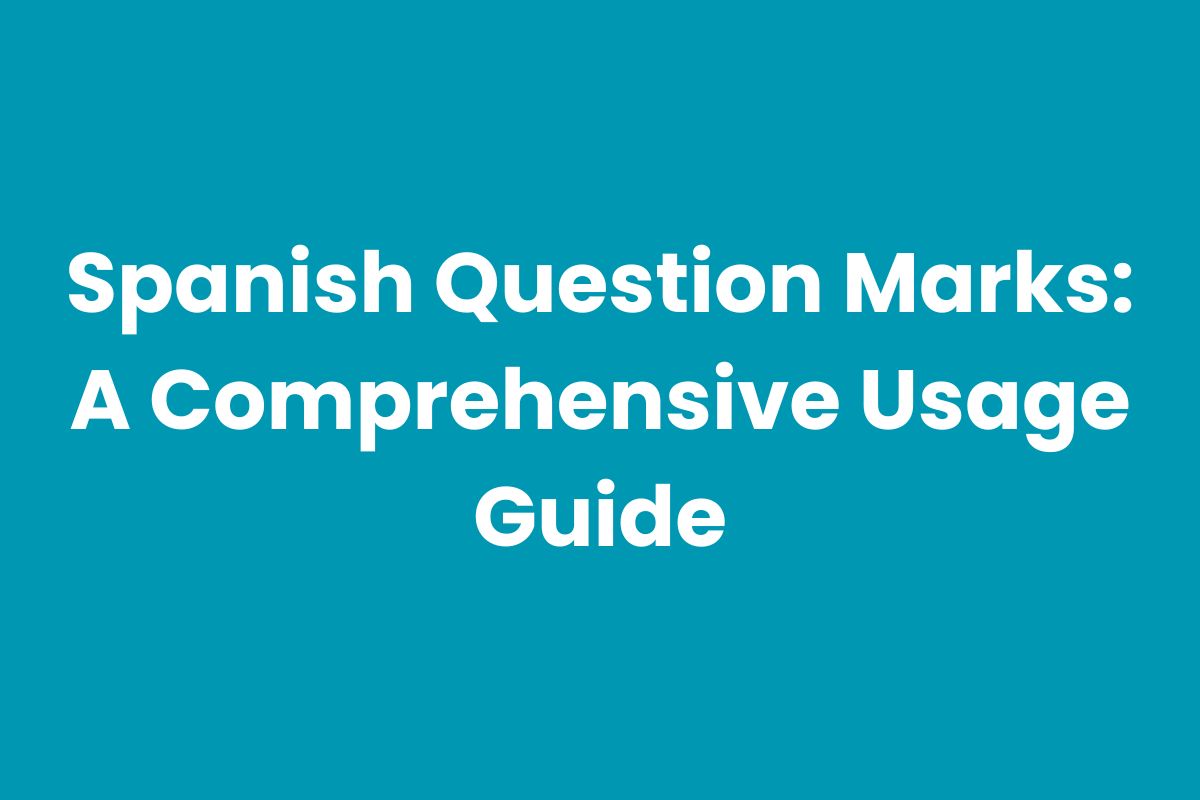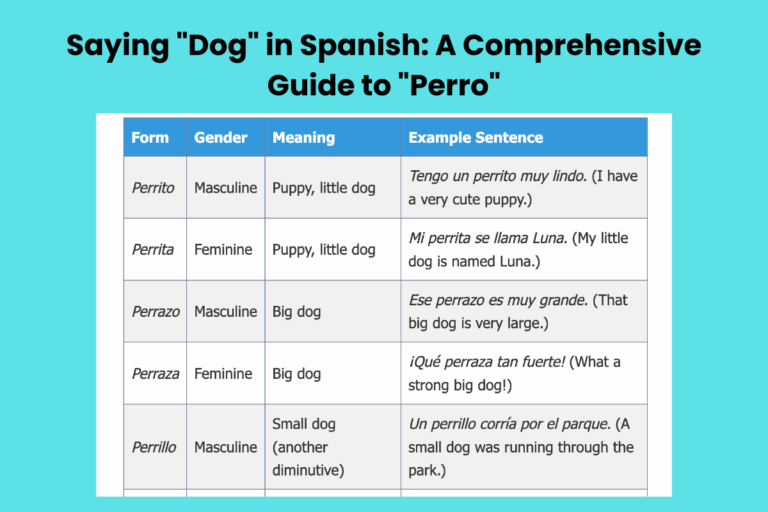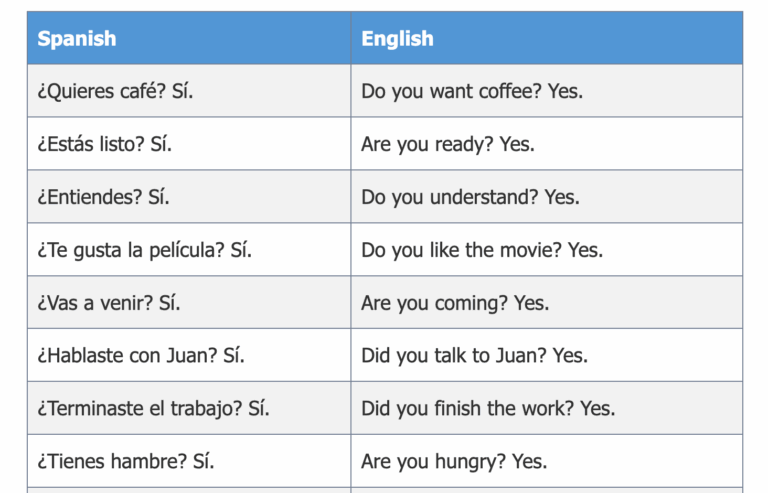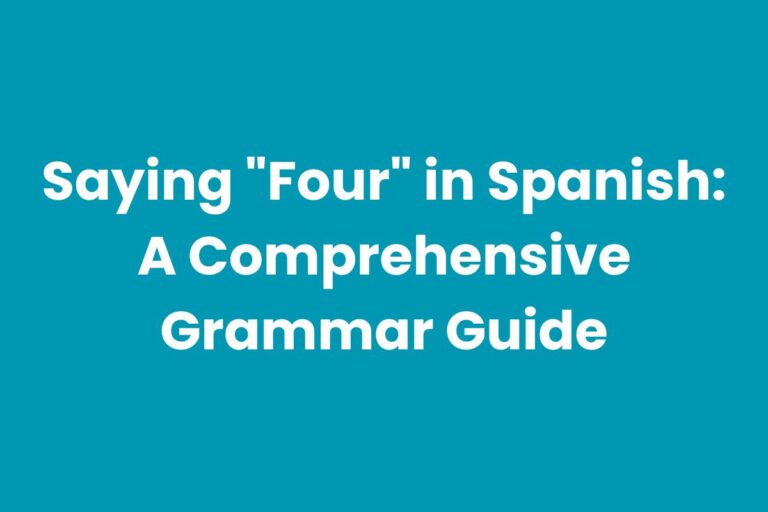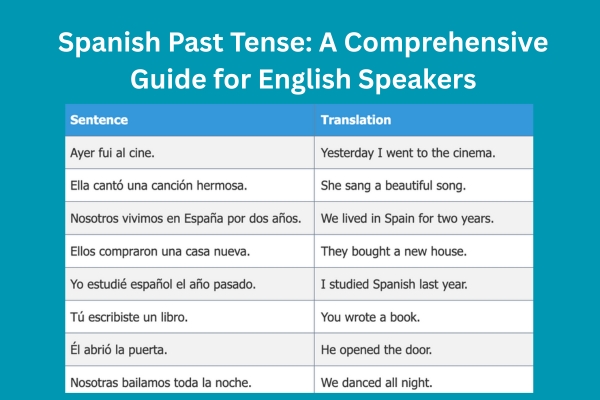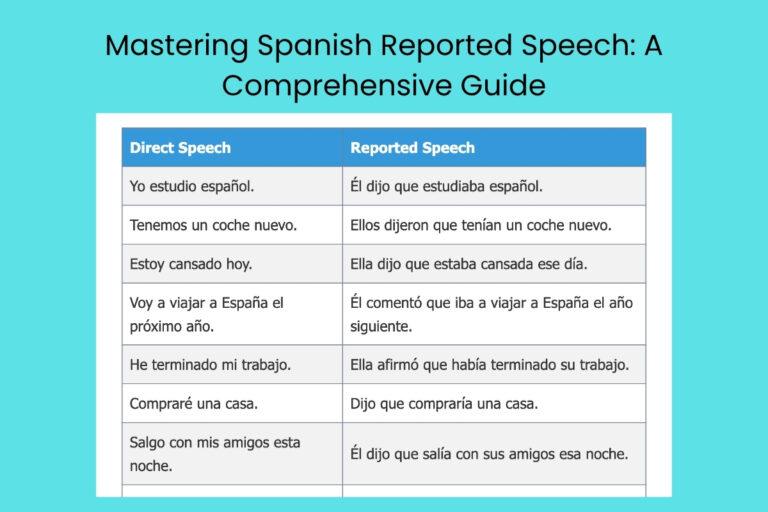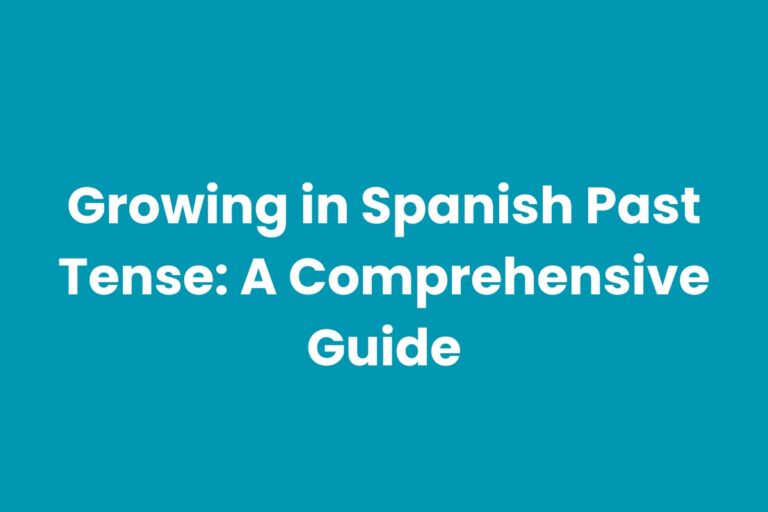Spanish Question Marks: A Comprehensive Usage Guide
Mastering Spanish punctuation is crucial for clear and accurate communication. Unlike English, Spanish uses inverted question marks (¿) at the beginning of a question, alongside the standard question mark (?) at the end.
Understanding this unique feature is essential for reading and writing Spanish effectively. This article provides a detailed guide to the usage of Spanish question marks, covering everything from basic rules to advanced applications.
Whether you’re a beginner or an advanced learner, this guide will help you confidently navigate the nuances of Spanish interrogation.
This comprehensive guide benefits students, teachers, and anyone interested in improving their Spanish language skills. By the end of this article, you will have a solid understanding of how and when to use Spanish question marks correctly, enabling you to write and understand Spanish with greater accuracy and fluency.
Table of Contents
- Definition of Spanish Question Marks
- Structural Breakdown
- Types of Questions in Spanish
- Examples of Spanish Question Marks in Use
- Usage Rules for Spanish Question Marks
- Common Mistakes with Spanish Question Marks
- Practice Exercises
- Advanced Topics
- Frequently Asked Questions
- Conclusion
Definition of Spanish Question Marks
In Spanish, a question is always marked with two question marks: an inverted question mark (¿) at the beginning and a standard question mark (?) at the end. This dual marking system is a fundamental aspect of Spanish punctuation and helps readers immediately identify interrogative sentences.
The inverted question mark (¿) is essential because Spanish word order is often flexible. Without it, it might not be clear that a sentence is a question until the very end, leading to potential confusion.
The presence of ¿ signals the interrogative nature of the sentence from the outset.
Function and Contexts
The primary function of Spanish question marks is to indicate that a sentence is a question. They are used in direct questions, rhetorical questions, and sometimes in exclamatory sentences that express surprise or doubt.
The inverted question mark (¿) sets the tone for the sentence, guiding the reader’s interpretation.
Contextually, question marks appear in various types of sentences, including simple queries, complex inquiries, and embedded questions. Regardless of the complexity, the rule of using both ¿ and ? remains consistent.
Structural Breakdown
The structure of questions in Spanish involves the placement of the inverted question mark (¿) at the beginning and the standard question mark (?) at the end. This structure applies regardless of the length or complexity of the question.
Consider the following elements of a Spanish question:
- Inverted Question Mark (¿): Signals the start of the question.
- Question Content: The actual words forming the question.
- Standard Question Mark (?): Marks the end of the question.
The inverted question mark must be placed at the very beginning of the question, even if the question starts in the middle of a larger sentence. This is a crucial distinction from English, where such placement would be incorrect.
Types of Questions in Spanish
Spanish questions can be categorized based on their structure and the information they seek. Understanding these types aids in correctly applying question marks.
Direct Questions
Direct questions seek specific information and require a direct answer. They are typically introduced by interrogative words such as qué (what), quién (who), dónde (where), cuándo (when), cómo (how), and por qué (why).
Indirect Questions
Indirect questions are embedded within a statement and do not require question marks at the beginning or end. They are often introduced by phrases like “Me pregunto si…” (I wonder if…) or “No sé…” (I don’t know…). Because they are not direct questions, they do not use ¿ or ?.
Rhetorical Questions
Rhetorical questions are posed for effect rather than to elicit an answer. While they are phrased as questions, the answer is often implied or obvious.
They still require both ¿ and ? in Spanish.
Tag Questions
Tag questions are short questions added to the end of a statement, seeking confirmation or agreement. They also require both question marks.
Examples of Spanish Question Marks in Use
The following examples illustrate the use of Spanish question marks in various contexts. The tables below provide numerous examples to solidify your understanding.
Examples of Direct Questions
Direct questions are the most straightforward application of Spanish question marks. They seek specific information and always begin with ¿ and end with ?.
| Spanish Question | English Translation |
|---|---|
| ¿Cómo estás? | How are you? |
| ¿Qué hora es? | What time is it? |
| ¿Dónde vives? | Where do you live? |
| ¿Quién es tu mejor amigo? | Who is your best friend? |
| ¿Por qué estudias español? | Why do you study Spanish? |
| ¿Cuándo es tu cumpleaños? | When is your birthday? |
| ¿Tienes hermanos? | Do you have siblings? |
| ¿Te gusta el café? | Do you like coffee? |
| ¿Vas a la fiesta? | Are you going to the party? |
| ¿Estás cansado? | Are you tired? |
| ¿Quieres ir al cine? | Do you want to go to the movies? |
| ¿Sabes hablar francés? | Do you know how to speak French? |
| ¿Entiendes la pregunta? | Do you understand the question? |
| ¿Puedes ayudarme? | Can you help me? |
| ¿Has viajado a España? | Have you traveled to Spain? |
| ¿Cuál es tu color favorito? | What is your favorite color? |
| ¿Qué piensas de la película? | What do you think of the movie? |
| ¿Necesitas algo? | Do you need anything? |
| ¿Estudiaste para el examen? | Did you study for the exam? |
| ¿Trabajas los fines de semana? | Do you work on weekends? |
| ¿A qué te dedicas? | What do you do for a living? |
| ¿Tienes mascotas? | Do you have pets? |
| ¿Cocinas bien? | Do you cook well? |
| ¿Lees mucho? | Do you read a lot? |
| ¿Bailas salsa? | Do you dance salsa? |
Examples of Rhetorical Questions
Rhetorical questions are used to make a point rather than to seek an answer. They still require both ¿ and ?.
| Spanish Question | English Translation |
|---|---|
| ¿Acaso soy invisible? | Am I invisible or something? |
| ¿Qué más podía esperar? | What else could I have expected? |
| ¿Quién lo diría? | Who would have thought? |
| ¿De verdad crees eso? | Do you really believe that? |
| ¿Qué importa eso ahora? | What does that matter now? |
| ¿A quién le importa? | Who cares? |
| ¿No es obvio? | Isn’t it obvious? |
| ¿Qué te parece? | What do you think? (rhetorical) |
| ¿Es que no lo ves? | Can’t you see it? |
| ¿Cómo no iba a saberlo? | How could I not have known? |
| ¿Quién soy yo para juzgar? | Who am I to judge? |
| ¿No es una maravilla? | Isn’t it wonderful? |
| ¿Qué sentido tiene esto? | What’s the point of this? |
| ¿Por qué siempre me pasa esto a mí? | Why does this always happen to me? |
| ¿A dónde vamos a parar? | Where are we going to end up? |
| ¿Es que acaso no te importa? | Do you even care? |
| ¿Qué más da? | What difference does it make? |
| ¿No es increíble? | Isn’t it incredible? |
| ¿De qué sirve lamentarse? | What’s the use of complaining? |
| ¿Acaso no es evidente? | Isn’t it obvious? |
Examples of Tag Questions
Tag questions seek confirmation or agreement and also use both ¿ and ?.
| Spanish Question | English Translation |
|---|---|
| Hace calor, ¿verdad? | It’s hot, right? |
| Es tarde, ¿no? | It’s late, isn’t it? |
| Te gusta el chocolate, ¿cierto? | You like chocolate, right? |
| Estudias español, ¿verdad? | You study Spanish, right? |
| Vives aquí, ¿no es así? | You live here, don’t you? |
| Es fácil, ¿verdad? | It’s easy, right? |
| Entiendes, ¿sí? | You understand, yes? |
| Vendrás mañana, ¿verdad? | You’ll come tomorrow, right? |
| Estás de acuerdo, ¿no? | You agree, don’t you? |
| Es importante, ¿verdad? | It’s important, right? |
| Sabes la respuesta, ¿no? | You know the answer, right? |
| Me ayudarás, ¿verdad? | You’ll help me, right? |
| Te gusta la música, ¿cierto? | You like music, right? |
| Está lloviendo, ¿no? | It’s raining, isn’t it? |
| Terminaste el trabajo, ¿verdad? | You finished the work, right? |
| Es una buena idea, ¿no crees? | It’s a good idea, don’t you think? |
| Ella es inteligente, ¿verdad? | She is intelligent, right? |
| Él es simpático, ¿no? | He is nice, isn’t he? |
| Tienes tiempo, ¿verdad? | You have time, right? |
| Estás listo, ¿no es cierto? | You are ready, aren’t you? |
Examples of Questions within Sentences
Sometimes, a question is part of a larger sentence. The question still needs both question marks.
| Spanish Question | English Translation |
|---|---|
| No sé si vendrá, ¿tú lo sabes? | I don’t know if he’ll come, do you know? |
| Me pregunto, ¿qué estará haciendo ahora? | I wonder, what is he doing now? |
| Dime, ¿a dónde vas? | Tell me, where are you going? |
| Quisiera saber, ¿cuándo llegarás? | I would like to know, when will you arrive? |
| No entiendo, ¿por qué dices eso? | I don’t understand, why are you saying that? |
| Explícame, ¿cómo lo hiciste? | Explain to me, how did you do it? |
| Averigua, ¿quién llamó? | Find out, who called? |
| Necesito saber, ¿cuánto cuesta? | I need to know, how much does it cost? |
| Recuerda, ¿dónde dejaste las llaves? | Remember, where did you leave the keys? |
| Imagínate, ¿qué pasaría si ganáramos la lotería? | Imagine, what would happen if we won the lottery? |
| Intenta recordar, ¿qué comiste ayer? | Try to remember, what did you eat yesterday? |
| Comprueba, ¿si cerraste la puerta? | Check, if you closed the door? |
| No estoy seguro, ¿si es la mejor opción? | I’m not sure, if it’s the best option? |
| Piensa bien, ¿qué quieres hacer? | Think carefully, what do you want to do? |
| Pregúntale, ¿si necesita ayuda? | Ask him, if he needs help? |
| Aclárame, ¿cuál es tu plan? | Clarify for me, what is your plan? |
| Investiga, ¿quién es el responsable? | Investigate, who is responsible? |
| Considera, ¿cuáles son las consecuencias? | Consider, what are the consequences? |
| Analiza, ¿qué salió mal? | Analyze, what went wrong? |
| Reflexiona, ¿qué aprendiste de esto? | Reflect, what did you learn from this? |
Usage Rules for Spanish Question Marks
Several rules govern the proper use of Spanish question marks. Adhering to these rules ensures clarity and accuracy in written Spanish.
Rule 1: Always Use Both Question Marks
The most fundamental rule is to always use both the inverted question mark (¿) at the beginning and the standard question mark (?) at the end of a question. This rule applies to all types of direct questions.
Rule 2: Placement of the Inverted Question Mark
The inverted question mark should be placed at the very beginning of the question, even if the question is part of a larger sentence. Do not capitalize the first word after the inverted question mark unless it is a proper noun or the beginning of a new sentence.
Rule 3: Question Marks with Other Punctuation
When a question ends with an exclamation, both the question mark and exclamation mark are used, with the exclamation mark typically placed inside the question mark: ¿En serio!? (Really!?). The order can sometimes be reversed for emphasis, but this is less common.
Rule 4: Questions within Sentences
If a question is embedded within a larger sentence, the inverted question mark still begins the question, and the standard question mark ends it. The surrounding sentence is punctuated accordingly.
Exceptions and Special Cases
There are few exceptions to these rules. However, it’s important to remember that indirect questions do not use question marks at all.
Additionally, in informal writing, some people may omit the inverted question mark, but this is generally considered incorrect and should be avoided in formal contexts.
Common Mistakes with Spanish Question Marks
Several common mistakes can occur when using Spanish question marks. Being aware of these errors can help you avoid them.
Mistake 1: Forgetting the Inverted Question Mark
One of the most common mistakes is forgetting to use the inverted question mark (¿) at the beginning of a question. This can change the meaning of the sentence and cause confusion.
Incorrect: Cómo estás?
Correct: ¿Cómo estás?
Mistake 2: Incorrect Placement of the Inverted Question Mark
Another mistake is placing the inverted question mark in the wrong position. It should always be at the beginning of the question, even if the question starts in the middle of a sentence.
Incorrect: No sé cómo estás?
Correct: No sé, ¿cómo estás?
Mistake 3: Using Only One Question Mark
Using only one question mark (either the inverted or the standard one) is incorrect. Both are required for direct questions.
Incorrect: ¿Cómo estás.
Correct: ¿Cómo estás?
Mistake 4: Using Question Marks in Indirect Questions
Indirect questions do not require question marks. Using them in this context is a common error.
Incorrect: Me pregunto, ¿cómo estás?
Correct: Me pregunto cómo estás.
Practice Exercises
Test your understanding of Spanish question marks with the following exercises.
Exercise 1: Correct the Sentences
Correct the following sentences by adding or removing question marks as necessary.
| Question | Answer |
|---|---|
| 1. Como te llamas? | ¿Cómo te llamas? |
| 2. Me pregunto que hora es. | Me pregunto qué hora es. |
| 3. Dónde vives? | ¿Dónde vives? |
| 4. No se, a donde vamos? | No sé, ¿a dónde vamos? |
| 5. Que haces? | ¿Qué haces? |
| 6. Me gustaría saber cuando llegas? | Me gustaría saber cuándo llegas. |
| 7. Por que estudias español? | ¿Por qué estudias español? |
| 8. Tienes frio? | ¿Tienes frío? |
| 9. No entiendo, que quieres decir? | No entiendo, ¿qué quieres decir? |
| 10. Es tarde no? | Es tarde, ¿no? |
Exercise 2: Translate and Punctuate
Translate the following English sentences into Spanish and punctuate them correctly.
| English Question | Spanish Translation |
|---|---|
| 1. How old are you? | ¿Cuántos años tienes? |
| 2. I wonder what he is doing. | Me pregunto qué está haciendo. |
| 3. Where is the library? | ¿Dónde está la biblioteca? |
| 4. Tell me, why are you sad? | Dime, ¿por qué estás triste? |
| 5. You are coming, right? | Vendrás, ¿verdad? |
| 6. What is your favorite food? | ¿Cuál es tu comida favorita? |
| 7. Do you speak English? | ¿Hablas inglés? |
| 8. I want to know when you will arrive. | Quiero saber cuándo llegarás. |
| 9. Are you tired? | ¿Estás cansado? |
| 10. Is it cold, isn’t it? | Hace frío, ¿no? |
Advanced Topics
For advanced learners, understanding the nuances of question mark usage in complex sentences and specific contexts is crucial. This includes knowing how to handle multiple questions within a single sentence and understanding regional variations in punctuation.
Multiple Questions in One Sentence
When a sentence contains multiple questions, each question must be properly punctuated with both inverted and standard question marks. The capitalization of the following word depends on whether it begins a new independent clause.
Example: ¿Qué quieres hacer hoy? ¿Ir al cine o al parque? (What do you want to do today? Go to the movies or the park?).
Regional Variations
While the basic rules for question mark usage are consistent across the Spanish-speaking world, some regional variations exist in informal writing. However, in formal writing, the standard rules should always be followed.
Frequently Asked Questions
Here are some frequently asked questions about Spanish question marks.
- Why does Spanish use an inverted question mark?
The inverted question mark helps to immediately identify a sentence as a question, especially important in Spanish due to its flexible word order. This prevents misinterpretation and ensures clarity.
- Do I always need to use both question marks?
Yes, for all direct questions, you must use both the inverted question mark (¿) at the beginning and the standard question mark (?) at the end. This is a fundamental rule of Spanish punctuation.
- What if the question is part of a larger sentence?
The inverted question mark still begins the question, and the standard question mark ends it, regardless of where the question appears within the sentence. The surrounding sentence is punctuated accordingly.
- Are there any exceptions to this rule?
The main exception is indirect questions, which do not use question marks at all. These are embedded within statements and do not require interrogation marks.
- What happens if I forget the inverted question mark?
Forgetting the inverted question mark can cause confusion, as the sentence might not be immediately recognized as a question. It is generally considered incorrect, especially in formal writing.
- How do I type an inverted question mark?
On most computers, you can type an inverted question mark by holding down the Alt key and typing 0191 on the numeric keypad (Alt + 0191). On a Mac, you can use Option + Shift + ?.
- Can I use an exclamation mark and a question mark together?
Yes, when a sentence expresses both surprise and inquiry, you can use both marks. The exclamation mark is typically placed inside the question mark: ¿En serio!?
- Is it okay to omit the inverted question mark in informal writing?
While some people may omit it in very informal contexts, it is generally not recommended, as it can lead to misinterpretation. It’s best to always include it for clarity, especially in formal writing.
- What’s the difference between a direct and indirect question?
A direct question seeks specific information and requires a direct answer, using both question marks. An indirect question is embedded within a statement and does not require question marks.
- Does capitalization change after the inverted question mark?
No, you do not capitalize the first word after the inverted question mark unless it is a proper noun or the beginning of a new sentence.
Conclusion
Understanding and correctly using Spanish question marks is essential for effective communication in Spanish. The dual marking system, with both the inverted question mark (¿) and the standard question mark (?), ensures clarity and prevents misinterpretations.
By following the rules outlined in this guide and practicing regularly, you can master this important aspect of Spanish punctuation.
Remember to always use both question marks for direct questions, pay attention to the placement of the inverted question mark, and avoid using question marks in indirect questions. With consistent practice and attention to detail, you’ll be able to confidently and accurately use Spanish question marks in your writing and reading.

